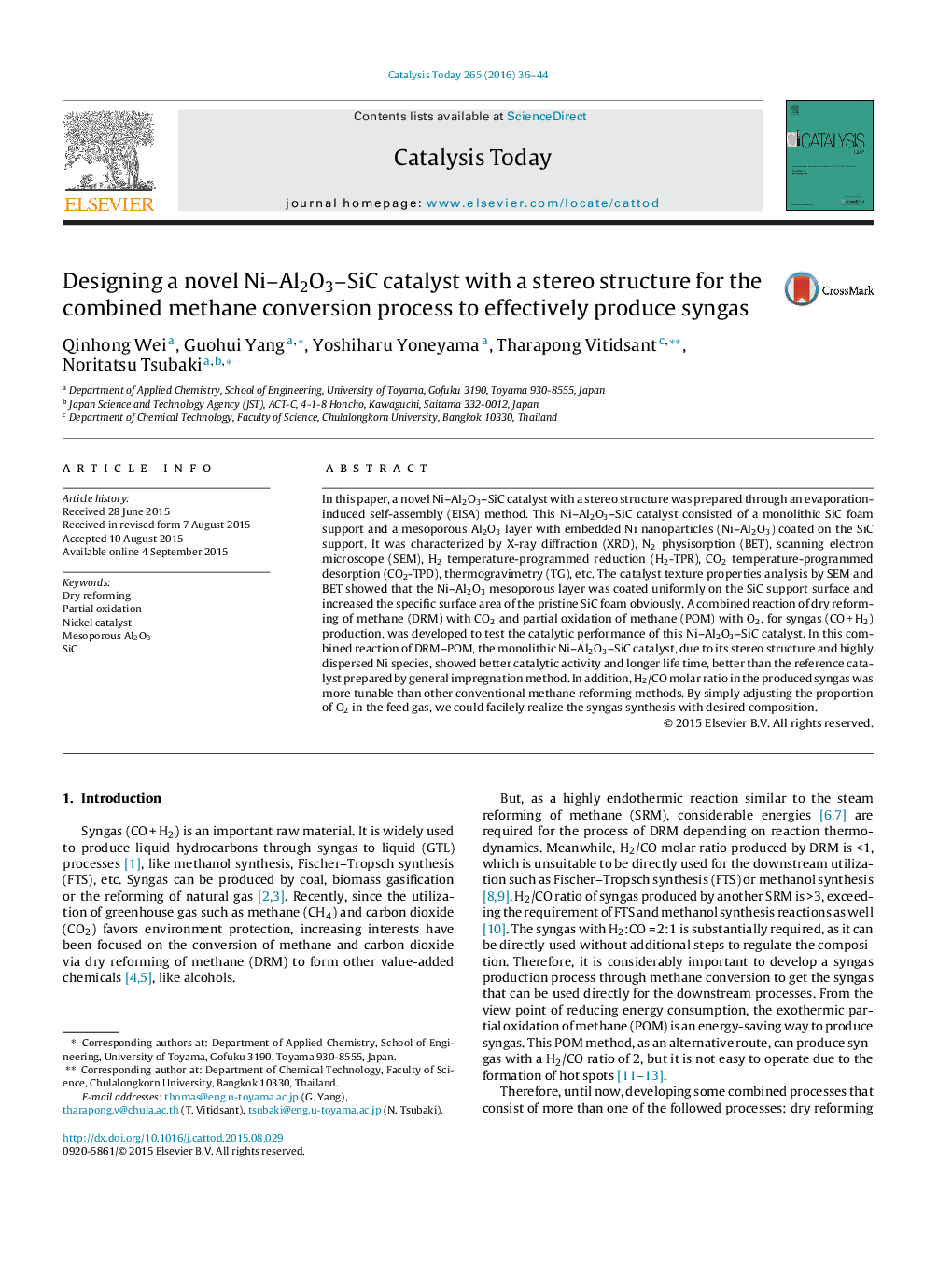| کد مقاله | کد نشریه | سال انتشار | مقاله انگلیسی | نسخه تمام متن |
|---|---|---|---|---|
| 53783 | 46984 | 2016 | 9 صفحه PDF | دانلود رایگان |

• A novel Ni–Al2O3–SiC catalyst with a stereo structure was prepared.
• Developing a combined methane conversion process for syngas production.
• Ni–Al2O3–SiC catalyst showed excellent catalytic performance in the combined methane conversion process.
• Ni–Al2O3–SiC catalyst effectively depressed carbon deposition.
In this paper, a novel Ni–Al2O3–SiC catalyst with a stereo structure was prepared through an evaporation-induced self-assembly (EISA) method. This Ni–Al2O3–SiC catalyst consisted of a monolithic SiC foam support and a mesoporous Al2O3 layer with embedded Ni nanoparticles (Ni–Al2O3) coated on the SiC support. It was characterized by X-ray diffraction (XRD), N2 physisorption (BET), scanning electron microscope (SEM), H2 temperature-programmed reduction (H2-TPR), CO2 temperature-programmed desorption (CO2-TPD), thermogravimetry (TG), etc. The catalyst texture properties analysis by SEM and BET showed that the Ni–Al2O3 mesoporous layer was coated uniformly on the SiC support surface and increased the specific surface area of the pristine SiC foam obviously. A combined reaction of dry reforming of methane (DRM) with CO2 and partial oxidation of methane (POM) with O2, for syngas (CO + H2) production, was developed to test the catalytic performance of this Ni–Al2O3–SiC catalyst. In this combined reaction of DRM–POM, the monolithic Ni–Al2O3–SiC catalyst, due to its stereo structure and highly dispersed Ni species, showed better catalytic activity and longer life time, better than the reference catalyst prepared by general impregnation method. In addition, H2/CO molar ratio in the produced syngas was more tunable than other conventional methane reforming methods. By simply adjusting the proportion of O2 in the feed gas, we could facilely realize the syngas synthesis with desired composition.
Figure optionsDownload high-quality image (213 K)Download as PowerPoint slide
Journal: Catalysis Today - Volume 265, 1 May 2016, Pages 36–44